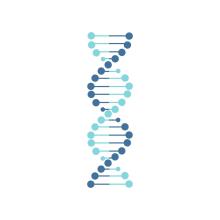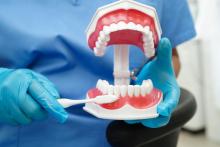Recent Publications

Rajashekar Donaka, David Karasik: Early life lipid overload in Native American Myopathy is phenocopied by stac3 knockout in zebrafish (Gene .)
Understanding the early stages of human congenital myopathies is critical for proposing strategies for improving musculoskeletal muscle performance, such as restoring the functional integrity of the cytoskeleton. SH3 and cysteine-rich domain 3 (STAC3) are proteins involved in nutrient regulation and are an essential component of the excitation-contraction (EC) coupling machinery for Ca2+ releasing. A mutation in STAC3 causes debilitating Native American Myopathy (NAM) in humans, while loss of this gene in mice and zebrafish (ZF) results in premature death. Clinically, NAM patients demonstrated increased lipids in skeletal muscle, but it is unclear if neutral lipids are associated with altered muscle function in NAM. Using a CRISPR/Cas9 induced stac3-/-/knockout (KO) zebrafish model, we determined that loss of stac3 leads to delayed larval hatching which corresponds with muscle weakness and decreased whole-body Ca2+ level during early skeletal development.

Liron Leibovitch: Single-Dose Versus Extended Antibiotic Prophylaxis in Primary Hip and Knee Arthroplasty: A Systematic Review and Meta-Analysis (Cureus .)
The optimal duration of antibiotic prophylaxis for patients undergoing primary hip or knee arthroplasty remains debated. We conducted a systematic review and meta-analysis to compare the outcomes of single-dose versus extended antibiotic prophylaxis.

Alon Gorenshtein: Long term survival and outcomes in patients with paraneoplastic neurologic syndromes (Front Immunol. )
It is unknown whether delay in diagnosis affects morbidity reportedly in paraneoplastic syndromes (PNS). We aimed to explore various aspects of PNS, including prevalence, clinical characteristics, diagnostic criteria, and treatment outcomes.

Lital Hodeda: Circulating Endothelial Progenitor Cells in Patients with Established Cardiovascular Disease Treated with PCSK9 Monoclonal Antibodies (Am J Prev Cardiol . )
The role of circulating endothelial progenitor cells (cEPCs) in vascular repair and their association to cardiovascular protection is well established. Objectives: We examined the effect of proprotein convertase subtilisin kexin type 9 monoclonal antibodies (PCSK9 mAb) on cEPCs in adults with hypercholesterolemia and cardiovascular disease, aiming to establish a pleotropic class effect.

Hanaa Shaalan, Maya Azrad, Avi Peretz: The effect of three urease inhibitors on H. pylori viability, urease activity and urease gene expression (Front Microbiol .)
Treatment of Helicobacter pylori (H. pylori) infections is challenged by antibiotic resistance. The urease enzyme contributes to H. pylori colonization in the gastric acidic environment by producing a neutral microenvironment. We hypothesized that urease inhibition could affect H. pylori viability. This work aimed to assess the effects of acetohydroxamic acid (AHA), ebselen and baicalin on urease activity, bacterial viability and urease genes expression in H. pylori isolates.

Amjad Shhadeh, Shadi Daoud, Adeeb Zoabi, Samer Srouji, Fares Kablan: A Soft Tissue-Borne Patient-Specific Guide for Foreign Body Removal in the Facial Region (Cureus . )
Foreign body removal in the facial region poses significant challenges due to the complex anatomy and the proximity to critical structures. This study introduces a soft tissue-borne patient-specific guide (PSG) designed to enhance precision and minimize invasiveness in foreign body removal.

Does Combining Warm Perineal Compresses with Perineal Massage During the Second Stage of Labor Reduce Perineal Trauma? A Randomized Controlled Trial: Warm compresses for reducing perineal trauma (Am J Obstet Gynecol MFM . )
Various interventions have been applied to reduce perineal trauma and obstetric anal sphincter injuries (OASIS). The efficacy of warm compresses during the second stage of labor for reducing the occurrence of perineal tears is controversial. Objective: We aimed to compare rates of spontaneous perineal tears requiring suturing, between women who received warm compresses plus perineal massage vs. perineal massage alone.
(Raneen Abu Shqara, Aya Banenbaum, Sari Nahir Biderman, Inshirah Sgayer, Riva Keidar, Nadir Ganim, Lior Lowenstein, Susana Mustafa)

Aysar Nashef: Smad4 Heterozygous Knockout Effect on Pancreatic and Body Weight in F1 Population Using Collaborative Cross Lines (Biology (Basel) .)
Smad4, a critical tumor suppressor gene, plays a significant role in pancreatic biology and tumorigenesis. Genetic background and sex are known to influence phenotypic outcomes, but their impact on pancreatic weight in Smad4-deficient mice remains unclear. This study investigates the impact of Smad4 deficiency on pancreatic weight in first-generation (F1) mice from diverse collaborative cross (CC) lines, focusing on the influence of genetic background and sex.

Efrat Sharon, Omry Koren: Association of Adult Atopic Dermatitis with Impaired Oral Health and Oral Dysbiosis: A Case-Control Study (Int Dent J .)
Systemic alterations in the oral cavity can be reflected in skin disorders like psoriasis. However, data about oral health factors that are affected and controlled mainly by oral microbiota in atopic dermatitis (AD) are sparse. This study compared the oral status and oral microbiota of AD patients and healthy controls.

Ran Tur-Kaspa: Hepatitis B Virus-Induced Resistance to Sorafenib and Lenvatinib in Hepatocellular Carcinoma Cells: Implications for Cell Viability and Signaling Pathways (Cancers (Basel) . )
Sorafenib and lenvatinib are tyrosine kinase inhibitors used in hepatocellular carcinoma (HCC) treatment. This study investigates how hepatitis B virus (HBV) infection affects their efficacy in HepG2 hepatoma cells.

Elias Daud: Inter-site comparability of 4D flow cardiovascular magnetic resonance measurements in healthy traveling volunteers-a multi-site and multi-magnetic field strength study (Front Cardiovasc Med .)
Time-resolved 3D cine phase-contrast cardiovascular magnetic resonance (4D flow CMR) enables the characterization of blood flow using basic and advanced hemodynamic parameters. However, different confounders, e.g., different field strength, scanner configurations, or sequences, might impact 4D flow CMR measurements. This study aimed to analyze the inter-site reproducibility of 4D flow CMR to determine the influence of said confounders.

Khalaf Kridin: COVID-19 infection is associated with an elevated risk for autoimmune blistering diseases while COVID-19 vaccination decreases the risk: A large-scale population-based cohort study of 112 million individuals (J Am Acad Dermatol . )
Numerous diseases associated with COVID-19 infection and vaccination have been reported, including conditions such as the autoimmune blistering diseases (AIBD) pemphigus and pemphigoid. However, robust evidence supporting these associations is lacking. Objective: To investigate the risk of developing AIBD following COVID-19 infection and vaccination.

Raneen Abu Shqara, Lior Lowenstein, Maya Frank Wolf: Impact of meconium-stained amniotic fluid thickness on maternal infectious morbidity: a comprehensive clinical and microbiological analysis (Arch Gynecol Obstet .)
The aim of this study was to investigate the correlation between the thickness of meconium-stained amniotic fluid (MSAF) and maternal infectious morbidity.

Naim Shehadeh: Dapagliflozin or saxagliptin in pediatric type 2 diabetes: a plain language summary (Curr Med Res Opin . )
The T2NOW study was a clinical trial which tested the use of two different blood sugar-reducing drugs (dapagliflozin or saxagliptin) in young people aged between 10 and 17 years with type 2 diabetes. Each drug was compared with a placebo to see to what extent the treatment can control blood sugar levels, and to observe any side effects.

Hava Gil-Henn: Modeling Lymphoma Angiogenesis, Lymphangiogenesis, and Vessel Co-Option, and the Effects of Inhibition of Lymphoma-Vessel Interactions with an αCD20-EndoP125A Antibody Fusion Protein (Cells .)
Lymphoma growth, progression, and dissemination require tumor cell interaction with supporting vessels and are facilitated through tumor-promoted angiogenesis, lymphangiogenesis, and/or lymphoma vessel co-option. Vessel co-option has been shown to be responsible for tumor initiation, metastasis, and resistance to anti-angiogenic treatment but is largely uncharacterized in the setting of lymphoma. We developed an in vitro model to study lymphoma-vessel interactions and found that mantle cell lymphoma (MCL) cells co-cultured on Matrigel with human umbilical vein (HUVEC) or human lymphatic (HLEC) endothelial cells migrate to and anneal with newly formed capillary-like (CLS) or lymphatic-like (LLS) structures, consistent with lymphoma-vessel co-option.



